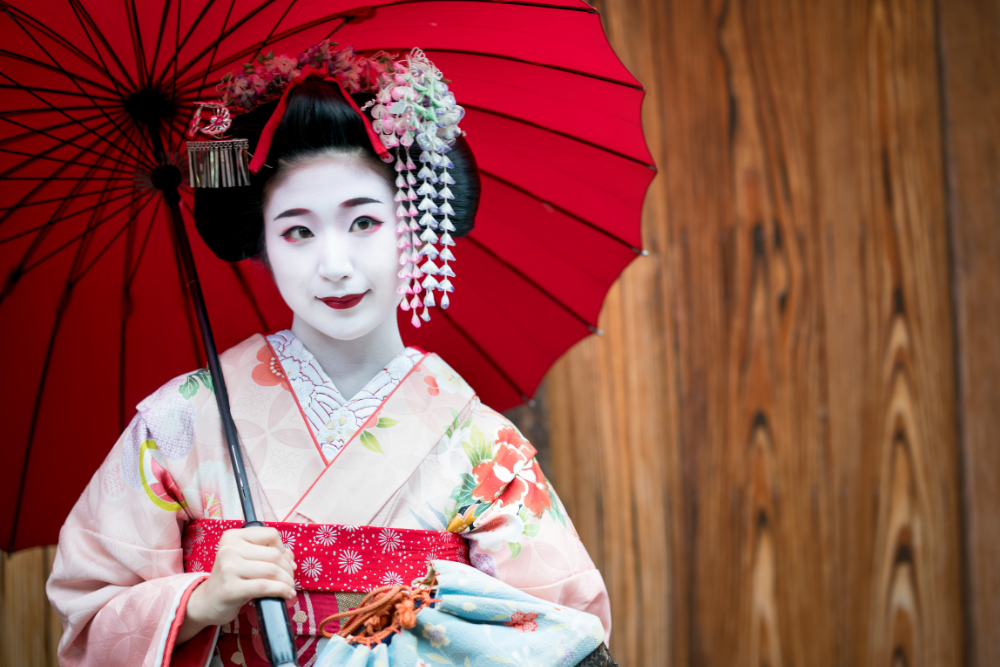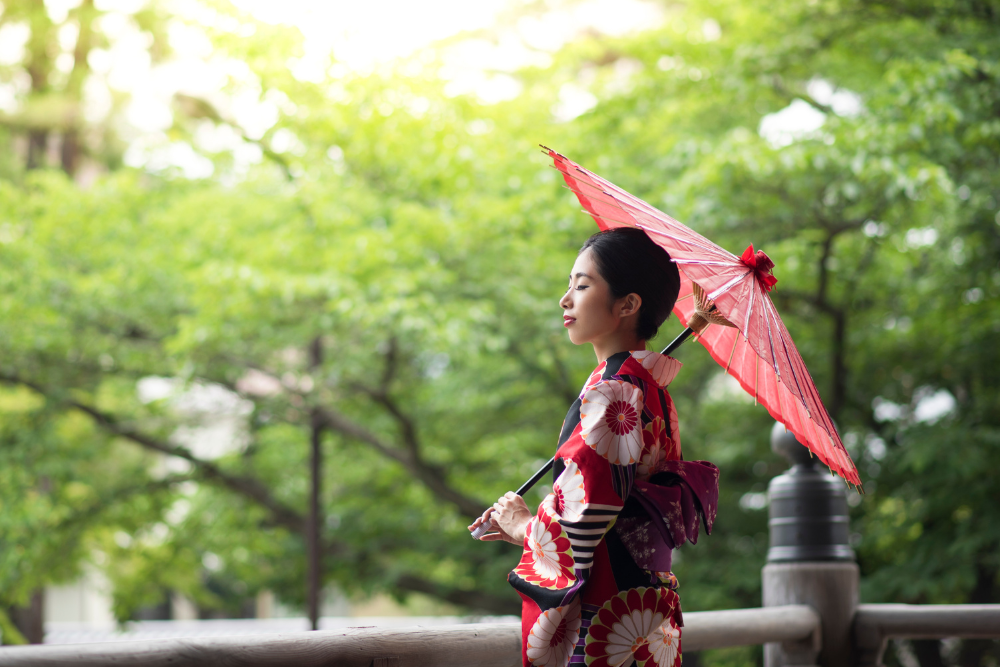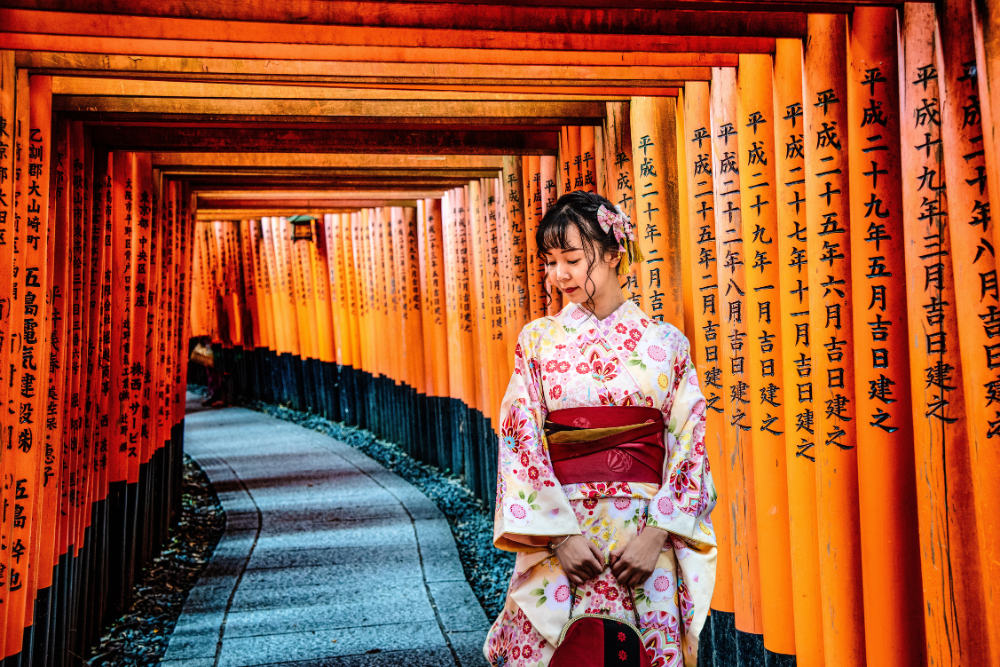Japan’s geisha districts, known as hanamachi (花街, “flower towns”), are among the most enchanting places to experience the country’s traditional arts, culture, and history. These historic neighborhoods, where geisha continue to entertain guests with their refined performances, offer a glimpse into a world of elegance, artistry, and exclusivity that has remained largely unchanged for centuries.
From the iconic teahouses of Kyoto’s Gion to the charming chaya districts of Kanazawa, this guide explores Japan’s most famous geisha districts, their history, and how visitors can experience their timeless beauty.
1. Who Are Geisha? A Brief Introduction
Geisha (芸者, “person of the arts”) are highly skilled entertainers trained in traditional Japanese arts, including:
- Classical dance (nihon buyo)
- Shamisen (three-stringed instrument) performance
- Tea ceremony (sadō)
- Calligraphy and poetry
- Engaging conversation and refined hospitality
Unlike common misconceptions, geisha are not courtesans, but rather custodians of Japan’s cultural heritage, carrying on artistic traditions that date back to the Edo period (1603–1868).
Young women who train to become geisha start as maiko (apprentice geisha) before mastering their craft and graduating into full-fledged geisha (or geiko, as they are called in Kyoto).
2. Kyoto’s Geisha Districts: The Heart of Tradition
Kyoto is home to Japan’s most famous geisha culture, with five hanamachi (geisha districts) where geisha and maiko still live and train.
Gion (祇園) – The Most Famous Geisha District
Gion is Kyoto’s most renowned geisha district, located near Yasaka Shrine. It is divided into two sections:
- Gion Kobu – The largest and most prestigious geisha district, home to the famous Gion Corner, where visitors can see geisha performances.
- Gion Higashi – A smaller but equally charming district with beautiful traditional tea houses (ochaya).
What to See in Gion:
- Shirakawa Street – A picturesque canal lined with weeping willows and traditional machiya townhouses.
- Hanami-koji Street – The main street of Gion, lined with ochaya (tea houses) where geisha entertain private guests.
- Yasaka Shrine – A historic Shinto shrine that plays an important role in Kyoto’s annual Gion Matsuri festival.
Best time to visit: Late afternoon and evening, when maiko and geisha walk to their appointments.
Pontocho (先斗町) – A Narrow Alley of Hidden Elegance
Pontocho is a narrow, atmospheric alley running parallel to the Kamo River, known for its exclusive geisha houses, traditional restaurants, and intimate tea houses.
What to See in Pontocho:
- Pontocho Kaburenjo Theater – Venue for the Kamogawa Odori, a seasonal dance performance by geisha.
- Riverside dining (kawadoko) – Enjoy kaiseki (multi-course) meals with river views during summer.
Best time to visit: Evening, when the lantern-lit alley creates a magical atmosphere.
Miyagawacho (宮川町) – A Hidden Gem for Geisha Culture
Located just south of Gion, Miyagawacho is less crowded but equally rich in geisha tradition. It is home to Miyagawacho Kaburenjo Theater, where geisha perform the Kyo Odori (spring dance festival).
Best time to visit: During the Kyo Odori (April), when maiko and geisha perform seasonal dances.
Kamishichiken (上七軒) – Kyoto’s Oldest Geisha District
Kamishichiken, located near Kitano Tenmangu Shrine, is Kyoto’s oldest and most tranquil geisha district. Unlike Gion, it sees fewer tourists, allowing for a more authentic experience.
What to See in Kamishichiken:
- Kitano Tenmangu Shrine – Famous for plum blossoms and its monthly flea market.
- Kamishichiken Kaburenjo Theater – Hosts the elegant Kitano Odori performance in April.
3. Kanazawa’s Geisha Districts: A More Intimate Experience
Kanazawa, a city known for its samurai and artisan heritage, is home to beautifully preserved chaya districts (traditional teahouse districts), where geisha continue to perform.
Higashi Chaya District (ひがし茶屋街) – The Most Famous Chaya District
Kanazawa’s Higashi Chaya District is the largest and most picturesque, with cobblestone streets, traditional wooden tea houses, and gold-leaf shops.
What to See in Higashi Chaya:
- Kaikaro Teahouse – One of the few places where visitors can experience a geisha performance.
- Shima Teahouse – A historic tea house-turned-museum showcasing the lifestyle of Kanazawa’s geisha.
Best time to visit: Early morning for photography, or evening for a quiet, atmospheric stroll.
Kazuemachi Chaya District (主計町茶屋街) – A Riverside Hidden Gem
This smaller, quieter geisha district along the Asano River is ideal for those looking to experience Kanazawa’s geisha culture away from crowds.
4. How to Experience Geisha Culture as a Visitor
1. Attend a Public Geisha Performance
Many hanamachi hold seasonal geisha performances, such as:
- Miyako Odori (Kyoto, April) – Kyoto’s most famous spring dance, performed by Gion’s geisha.
- Kamogawa Odori (Kyoto, May) – A riverside dance event in Pontocho.
- Kanazawa Odori (Kanazawa, October) – A rare chance to see Kanazawa’s geisha perform.
2. Visit a Traditional Ochaya (Teahouse) Experience
Private geisha entertainment in an ochaya is typically exclusive, but some places allow visitors with reservations.
- Gion Hatanaka (Kyoto) – Offers a dining experience with maiko performances.
- Kanazawa’s Kaikaro Teahouse – Occasionally opens its doors to the public.
3. Book a Private Geisha Experience
Some high-end ryokan and cultural centers offer private geisha encounters, where guests can:
- Watch dance and shamisen performances
- Play ozashiki games (traditional geisha parlor games)
- Enjoy an intimate conversation with a geisha or maiko
4. Explore Geisha Districts at Night
Walking through Gion, Pontocho, or Higashi Chaya after sunset provides a mystical experience, as lantern-lit alleys glow softly and occasional glimpses of maiko heading to appointments can be seen.
Conclusion
Japan’s geisha districts are among its most culturally rich and visually stunning places to explore. Whether wandering through the historic streets of Kyoto’s Gion, experiencing an intimate geisha performance in Kanazawa, or simply soaking in the atmosphere of a hanamachi at night, visiting these districts offers a rare and unforgettable connection to Japan’s living traditions.
For the most authentic experience, attend a seasonal dance, book a private performance, or take a quiet evening stroll to witness the timeless elegance of Japan’s geisha culture.












